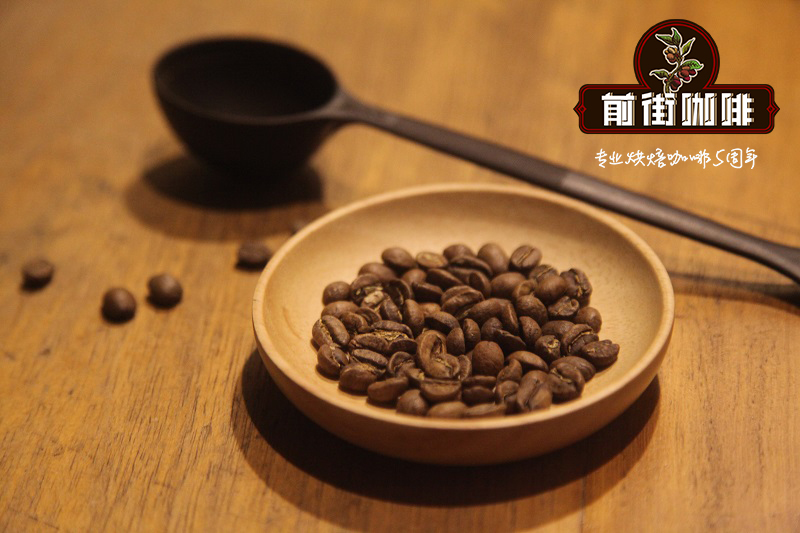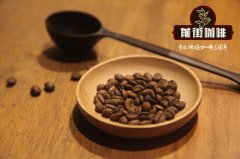Where is the best coffee bean Arabica? Explore what is the composition of coffee beans

Professional coffee knowledge exchange more coffee bean information please follow the coffee workshop (Wechat official account cafe_style)
Qianjie-A brief introduction to the ingredients of coffee beans
Components of raw coffee beans
Water: in raw coffee beans, water accounts for 9%, 13%, and has little effect on the aroma of coffee beans.
Polysaccharides: the most abundant ingredient in raw beans is polysaccharides, accounting for 35%, 45%. Although it is called sugar, it is not sweet at all. Polysaccharides here refer to the fibers that make up the bones of plants. The polysaccharides content of Arabica species is very different from that of Canefa species.
Protein: the content of protein is 12%. Proteins and polysaccharides are important components of plant bones. In this regard, the polysaccharides content of Arabica species is very different from that of Canefa species.
Fat: raw coffee beans contain fat, and the fat in coffee beans is composed of linoleic acid, palmitic acid and so on. In terms of oil content, Arabica fat has a higher oil content, accounting for 20%, while Canefa accounts for 1% at most.
Sugars (sucrose): the content of sucrose (in this case, granulated sugar), Arabica species can account for 10%, Canefa species 3% Mel 7%
Chlorogenic acid: the content of chlorogenic acids, Arabica species account for 5% Mel 8%, Canefra species account for 7% Mel 11%. There are many kinds of chlorogenic acid. Some kinds of chlorogenic acid are found only in Canefra.
Acids (chlorogenic acid): in addition to chlorogenic acid, there are citric acid, malic acid, quinic acid, phosphoric acid and so on. These account for only 2% of the total.
Caffeine: caffeine accounts for 0.9% of all kinds of caffeine in Arabica, 1.4% of the total: Carneflari usually accounts for 2%, more than 3% of the time.
Amino acids: the content of amino acids is 1% 2%. The amino acids in coffee beans include aspartic acid, glutamic acid and so on. In Arabica and Canefra, the occupancy of various amino acids is different. The oil content of these amino acids, sugars and chlorogenic acid also affects the coloring and flavor of Arabica and Canefra during baking.
In short: Qianjie is a coffee research hall, happy to share the knowledge about coffee with you, we share unreservedly just to make more friends fall in love with coffee, and there will be three low-discount coffee activities every month. The reason is that Qianjie wants to make more friends drink the best coffee at the lowest price, which has been Qianjie's tenet for 6 years!
END
Important Notice :
前街咖啡 FrontStreet Coffee has moved to new addredd:
FrontStreet Coffee Address: 315,Donghua East Road,GuangZhou
Tel:020 38364473
- Prev

What is the role of chlorogenic acid in coffee beans? it is the kind of coffee with high chlorogenic acid content.
Professional coffee knowledge exchange more coffee bean information please follow the coffee workshop (Wechat official account cafe_style) front street-coffee bean chlorogenic acid profile hate coffee acid, may be due to drinking "bad acid" acid, there are good and bad. In English, pleasant sour flavors such as lemons and berries are called Acidity, while unpleasant sour flavors such as vinegar and chemical sour are called
- Next

Where does coffee aroma come from? What does coffee aroma come from? Explore coffee secrets
Professional coffee knowledge exchange More coffee bean information Please pay attention to coffee workshop (Weixin Official Accounts cafe_style) Front street-coffee bean aroma profile Coffee is one of the most difficult foods to maintain fixed quality. From the essence of a cup of coffee, the water content in a cup of coffee reaches 98-99%, so in fact, less than 2% of the substances can affect the taste and aroma of coffee. so
Related
- Beginners will see the "Coffee pull flower" guide!
- What is the difference between ice blog purified milk and ordinary milk coffee?
- Why is the Philippines the largest producer of crops in Liberia?
- For coffee extraction, should the fine powder be retained?
- How does extracted espresso fill pressed powder? How much strength does it take to press the powder?
- How to make jasmine cold extract coffee? Is the jasmine + latte good?
- Will this little toy really make the coffee taste better? How does Lily Drip affect coffee extraction?
- Will the action of slapping the filter cup also affect coffee extraction?
- What's the difference between powder-to-water ratio and powder-to-liquid ratio?
- What is the Ethiopian local species? What does it have to do with Heirloom native species?

